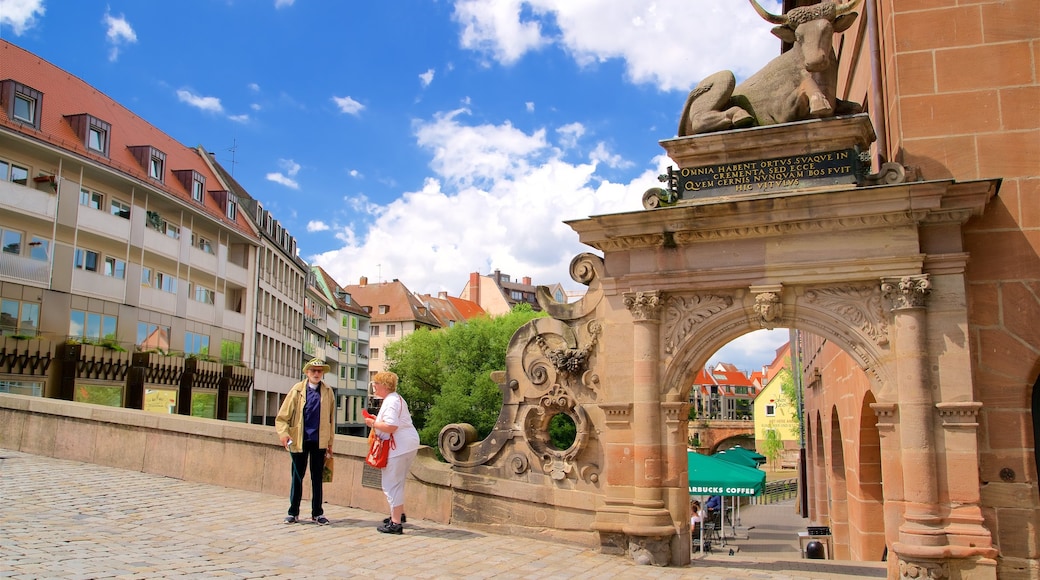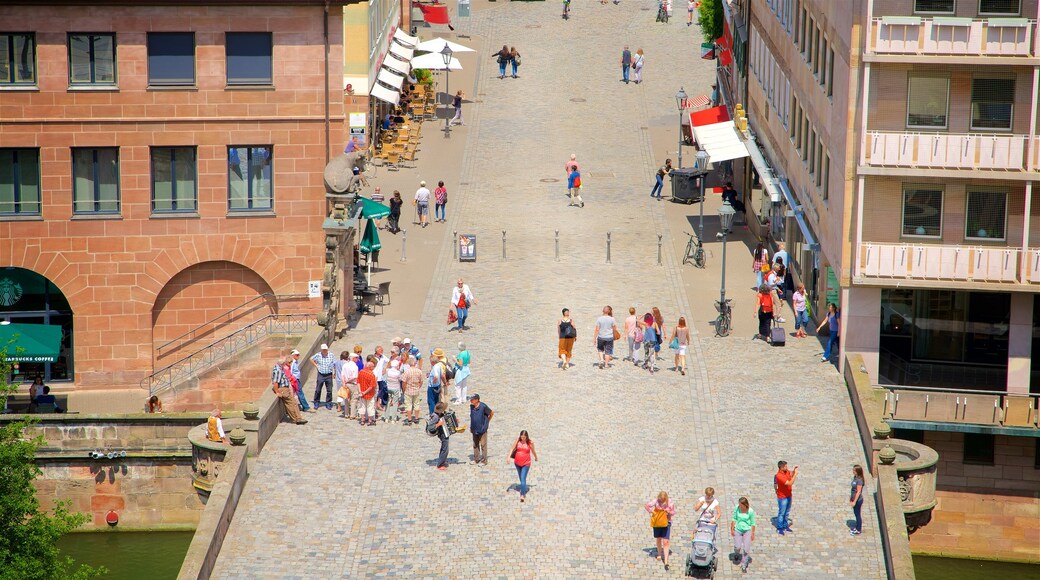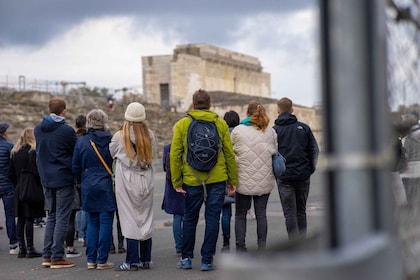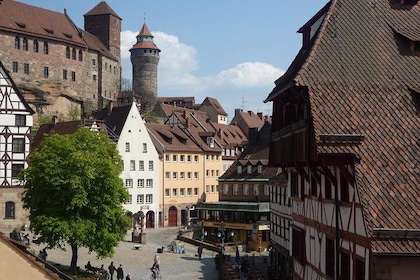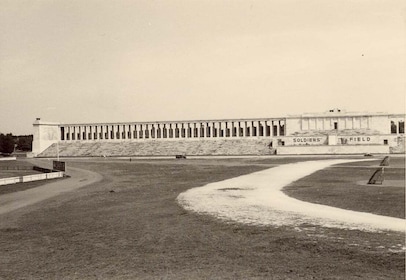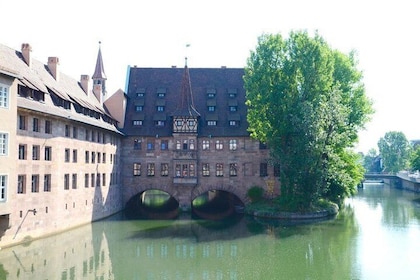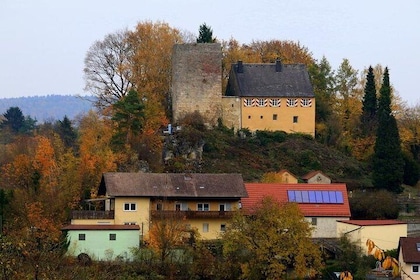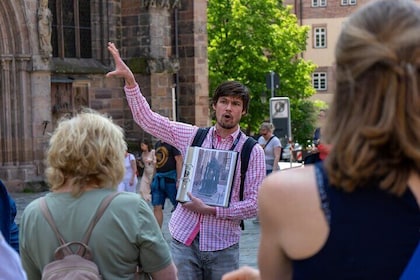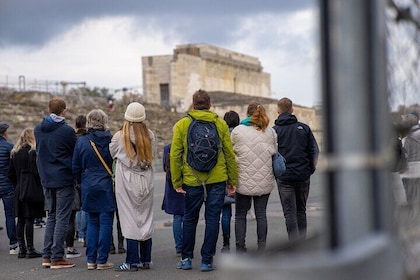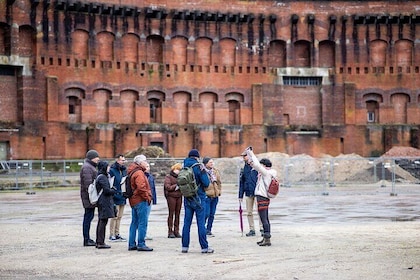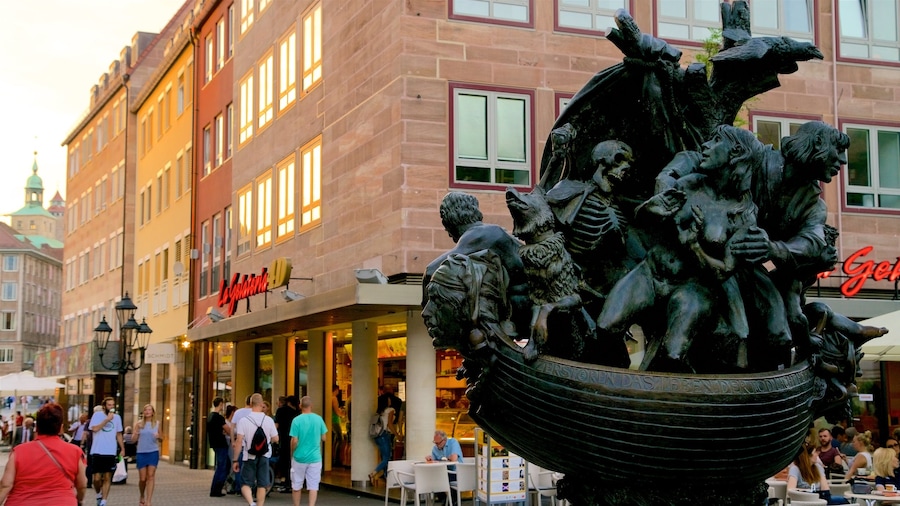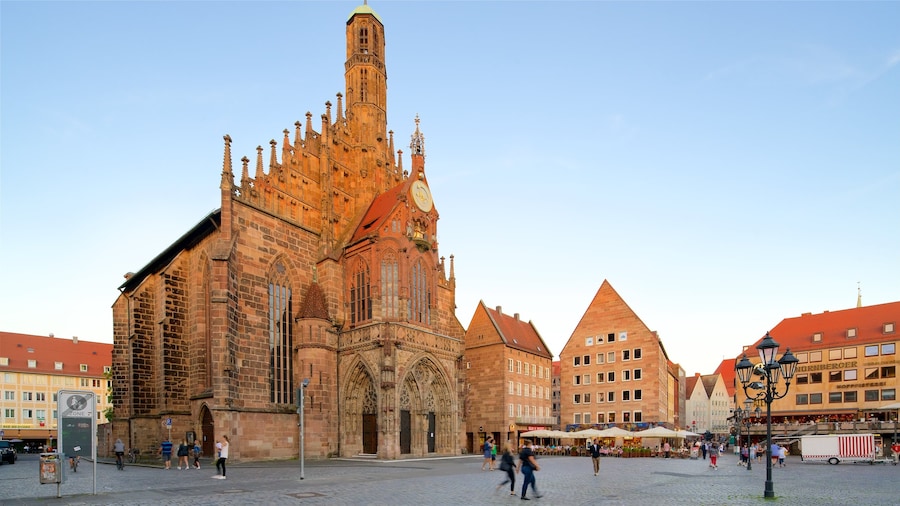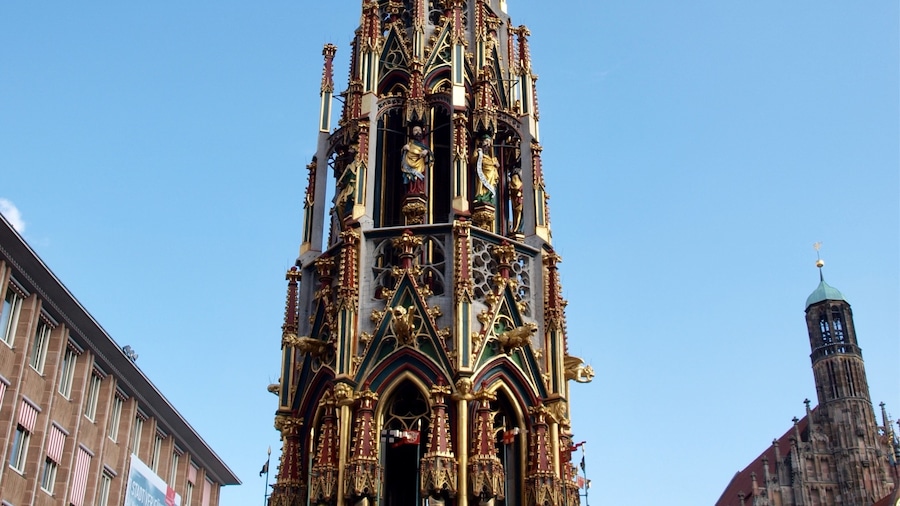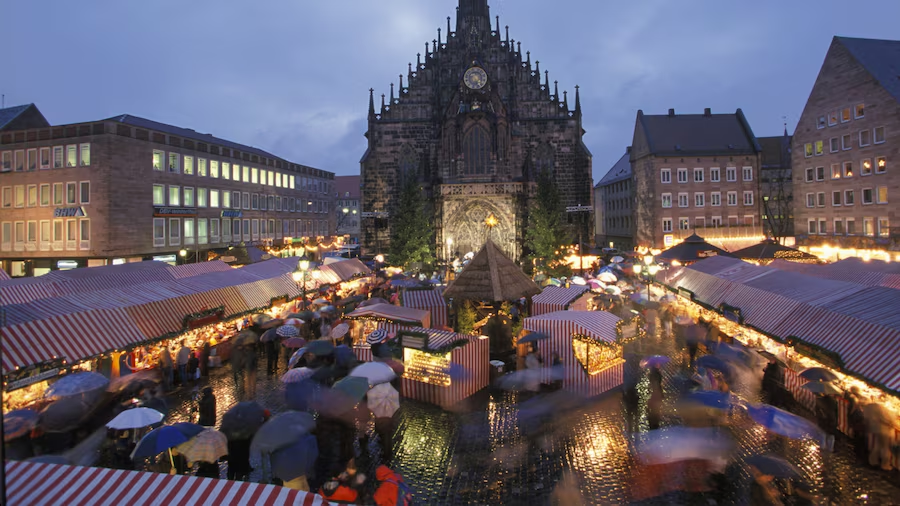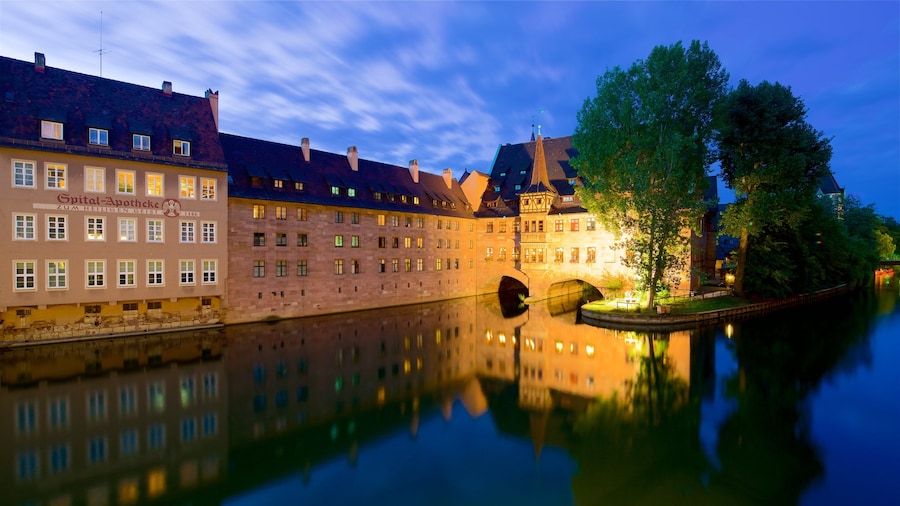Stroll across a late Renaissance bridge that has changed little since its construction in the 1590s. Watch the Pegnitz River flowing below as it has for centuries.
Nuremberg’s Fleischbrücke (Meat Bridge) is a historic bridge that has connected two banks in the heart of the city’s Old Town since the 16th century. Walk between the heritage districts of St. Sebald and St. Lorenz and admire the sturdy engineering of the stone bridge. Despite much of its surrounding architecture being destroyed in World War II, the Fleischbrücke has remained a landmark in the city’s historic center.
Check out the bridge’s unfaltering design from the banks of the Pegnitz River. Comprising a single arch of 89 feet (27 meters), the masonry bridge was the largest of its kind in the country at the time of its construction. The bridge’s age is owed to the ingenuity of its design, which involves its abutments being supported by a foundation of 2,100 wooden piles.
As you approach the bridge on the St. Sebald side, you’ll learn how the bridge came to get its name. The Ochsenportal (Ox Portal), which was added in 1599, shows where the bridge led to the former Meat Market in historic Nuremberg. Spot the statue of an ox on top of a pedestal at the portal and read the inscription on the stone. The Latin text translates to: “Everything has its origin and beginning, but the ox you see here has never been a calf.” The robust Fleischbrücke weathered the World War II bombardment that ruined much of the city and stands as a testament to the engineering innovation of the city’s forebears.
Explore the surrounding area to get different perspectives of the bridge and learn about its history. Seek out excellent views of the bridge’s full span from the tip of Liebeinsel, Love Island, to the west. Find a seat at one of the cafés on the western side of the bridge to enjoy views of the historic structure as you enjoy German pastries.
Find the Fleischbrücke in the middle of Nuremberg’s Old Town, an easy walk from rail and bus stations. The bridge is free to visit and a great addition to your walking tour of the city’s historic center.

